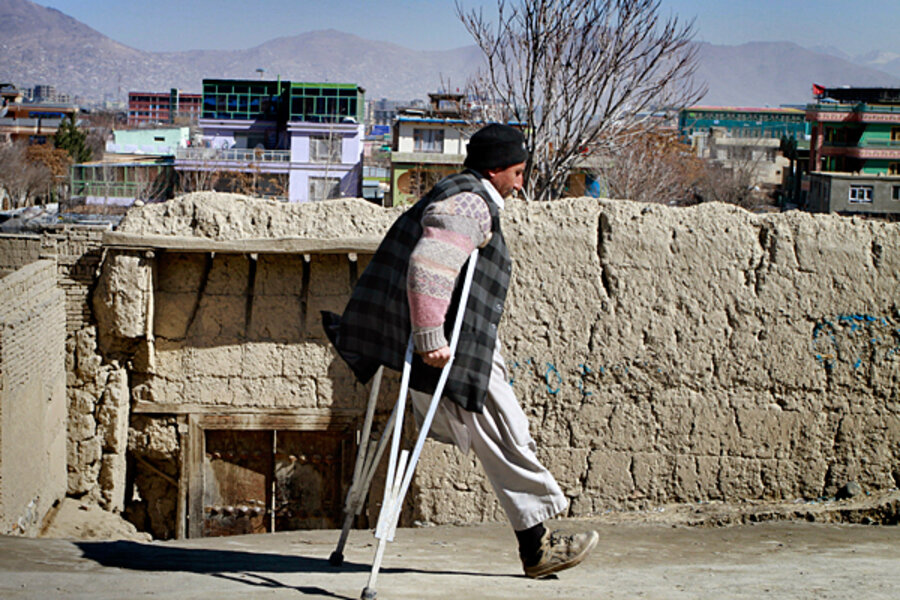US image problem grows as Afghanistan casualties mount
Loading...
| Kabul, Afghanistan
Violence against civilians in Afghanistan has climbed to the highest level since the fall of the Taliban in 2001, says a report released Wednesday by the UN Assistance Mission in Afghanistan (UNAMA).
The number of civilians killed as a result of fighting in this war-torn nation rose by 15 percent in 2010 as compared with 2009, according to the report, which comes after a coalition air strike killed nine boys in Kunar province, sparking several demonstrations in Kabul.
Despite the growing outrage over NATO-caused civilian deaths, however, the UNAMA report shows that the number of civilian deaths caused by Afghan and international forces dropped by 26 percent last year. Of the total 2,777 civilian deaths in 2010, Afghan and international forces were responsible for only 16 percent. Meanwhile, insurgent attacks accounted for 75 percent of civilian deaths, a 28 percent increase.
Think you know Asia? Take our geography quiz.
The report underscores the difficulties that face international forces. Even when their efforts to minimize civilian casualties are successful, it only takes a couple of high profile incidents to negatively turn public opinion. Meanwhile, as insurgent-caused casualties mount, the Taliban and other antigovernment groups may face an image crisis similar to NATO-led forces.
“There’s been an enormous expenditure of effort to make sure that when we employ air power that it is used judiciously,” says US Air Force Lt. Col. John Dorrian, an International Security Assistance Force spokesman. “Any civilian casualty incident – whether it be caused by ISAF or whether it’s caused by insurgents – is a detriment to our cause here.”
The decrease comes even as ISAF and Afghan forces grew by 107,000 personnel in 2010 and drastically increased operations. Last November, for example, US planes had 880 weapons releases, as opposed to 271 in November of 2009. With the exception of December, weapons releases have increased every month this year since June when compared with the same month last year, according to ISAF statistics. Despite the uptick, UNAMA notes a 52 percent drop in air attack causalities.
Some observers question the ability of international forces to conduct an air war of this scale without creating an increasingly hostile population –
especially after a NATO air strike killed nine boys collecting firewood in Kunar a week ago. Thomas Ruttig, codirector of the Afghanistan Analysts Network says that the US military must be aware of this risk and speculates that their adherence to using air power may signal a shifting strategy.
“For me, the only conclusion is that it has given up ‘winning hearts and minds.’ Since this aspect has been considered core of any successful COIN [counterinsurgency] strategy, it remains the US command’s secret how it wants to overcome the insurgency,” he says.
Meanwhile, the report indicates that insurgent forces are taking less care when it comes to winning over the population. Aside from the general increase in insurgent caused civilian deaths, there was a 105 percent increase in assassinations and an 83 percent increase in abductions during 2010.
A series of recent offensives against civilian targets, such as the Kabul Bank attack in Jalalabad and the supermarket bombing in Kabul may indicate that the insurgency is staring to focus on soft targets.
Comparing the Afghan insurgency to that of Iraq, Michael O’Hanlon, a senior fellow at the Brookings Institution points out that when Al Qaeda in Iraq began to inflict violence against the local population they quickly lost support. The Taliban may face similar problems if they do not limit collateral damage.
With the fighting season just about to begin as warm weather returns to Afghanistan, it remains difficult to gauge the strength of the insurgency after last spring and summer’s military offensives. It is also difficult to tell how the community will responded to insurgents after facing increased violence from the Taliban and other groups.
“I am worried that they are very resilient but we will see as the violence statistics start to come in during the fighting season," says Mr. O’Hanlon. "If 2011 is comparably violent to 2010 (or even more violent), we have a problem, or at least some serious questions.”





